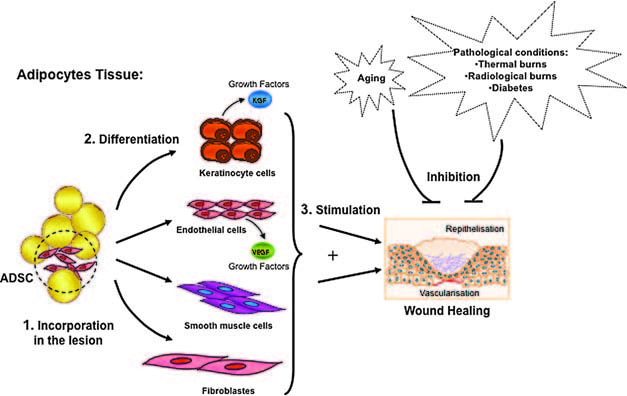
┬Ā
Stem Cell Therapies for the Treatment of Radiation-Induced Normal Tissue Side Effects
Marc Benderitter, Fabio Caviggioli, Alain Chapel, Robert P. Coppes, Chandan Guha, Marco Klinger,
Olivier Malard, Fiona Stewart, Radia Tamarat, Peter Van Luijk, and Charles L. Limoli
Abstract
Significance: Targeted irradiation is an effective cancer therapy but damage inflicted to normal tissues surrounding the tumor may cause severe complications. While certain pharmacologic strategies can temper the adverse effects of irradiation, stem cell therapies provide unique opportunities for restoring functionality to the irradiated tissue bed. Recent Advances: Preclinical studies presented in this review provide encouraging proof of concept regarding the therapeutic potential of stem cells for treating the adverse side effects associated with radiotherapy in different organs. Early-stage clinical data for radiation-induced lung, bone, and skin complications are promising and highlight the importance of selecting the appropriate stem cell type to stimulate tissue regeneration. Critical Issues: While therapeutic efficacy has been demonstrated in a variety of animal models and human trials, a range of additional concerns regarding stem cell transplantation for ameliorating radiationinduced normal tissue sequelae remain. Safety issues regarding teratoma formation, disease progression, and genomic stability along with technical issues impacting disease targeting, immunorejection, and clinical scale-up are factors bearing on the eventual translation of stem cell therapies into routine clinical practice. Future Directions: Follow-up studies will need to identify the best possible stem cell types for the treatment of early and late radiation-induced normal tissue injury. Additional work should seek to optimize cellular dosing regimes, identify the best routes of administration, elucidate optimal transplantation windows for introducing cells into more receptive host tissues, and improve immune tolerance for longer-term engrafted cell survival into the irradiated microenvironment.
Conclusions
Allogeneic hematopoietic stem cell transplantation has been successfully used over the past 4 decades for patients with hematologic diseases (81). Conventional myeloablative transplantation includes conditioning with high-dose radiotherapy and chemotherapy to eradicate residual disease and recipient (host) immunity in preparation for healthy donorderived hematopoietic stem cells (graft). This has been the first and most robust demonstration of the efficacy of stem cell therapies to completely reconstitute a sterilized tissue after high-dose radiotherapy, thereby opening new avenues for the treatment of other radiation-induced normal tissue sequelae.
After more than a decade of intense activity, the science of stem cells seems to be catching up with its promise. Clinical trials have established techniques for cell delivery and....
[See More]
